It’s clean and healthful.
Ordinary household cleaning keeps baseboard dust-free.
It’s a beautiful home…Don’t blow it with hot air heating…Choose hot water baseboard heating.

Ordinary household cleaning keeps baseboard dust-free.
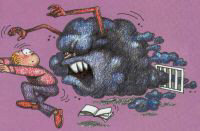
Ducts should be professionally cleaned. A hot air system acts like a vacuum cleaner, sucking into the ducts household dirt, dust, pet hair, cigarette smoke, pollen, pesticides, cooking grease, even through filters. In the ducts bacteria and fungi breed and pollutants are stirred up and distributed by the ductwork through the air registers in every room. This spreads illnesses, allergens, and fumes.

A remote boiler circulates hot water silently through finger-width tubing and low profile baseboard convector-radiators. Since natural convection distributes the warmth, no fan is required. And the small circulating pump uses very little electricity.

A large fan is required to force the heated air from the furnace. Ducts carry the hot air and fan noise to every room. You are disturbed by the frequent start and stop of the motor and the “whoosh” of the air itself. The typical hot air fan motor uses much more electricity than the typical hot water circulating pump.
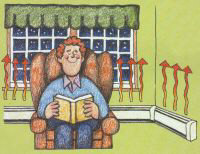
Baseboard provides heat through gentle radiation and natural convection starting at the perimeter of the house. This blankets cold walls and windows with warmth, preventing drafts and providing uniform heat from wall to wall and floor to ceiling. You feel comfortable all the time without being conscious of the heating system.
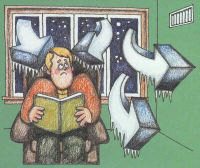
Hot, blowing air is precisely why it’s called a hot air system. When the system’s in operation, you feel surges of hot air. When it’s not, you feel drafts from cold walls or windows. And since hot air rises, your home is warmer at the ceilings and cooler at floor level.
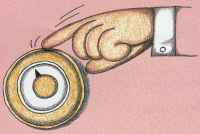
Rooms having different temperature requirements are easily satisfied with hot water heat. Separate heating zones can be installed, each controlled by its own thermostat, to meet every comfort need.
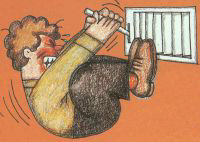
Zoning a hot air ducted system is expensive, less effective, and bothersome. Duct dampers and individual registers easily become unbalanced and must repeatedly be adjusted to avoid overheating or underheating.

The hot water piping is a totally sealed system bringing virtually all the useable heat energy produced by the boiler into the rooms where it’s needed. The heat distribution system does not leak heated forced air through ducts which would increase the infiltration of cold air and raise fuel costs. More than nine out of ten centrally heated homes and buildings in energy-conscious Europe feature efficient hot water heat.

“Forced-air furnaces, the most common heating system, waste energy, through duct leakage, the system’s effects on a building’s infiltration rate, and thermal conduction. For example, duct leakage accounts for 10% to 20% of the total air infiltration rate when the furnace blower is off. Total infiltration rates typically increase by 200% when the blower fan is turned on. The total infiltration rate can increase by as much as 500% when the return air paths are impeded, such as when interior doors are closed.”
Reviews for Monogram Custom Pools (610)282-0235

